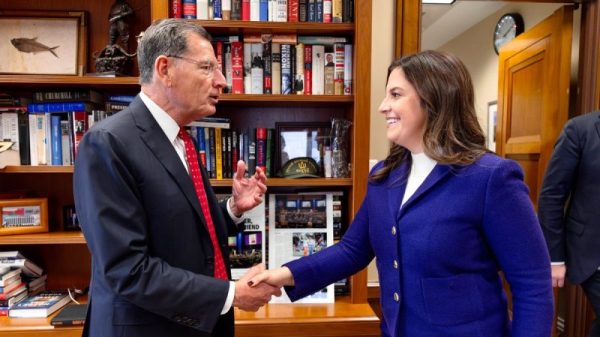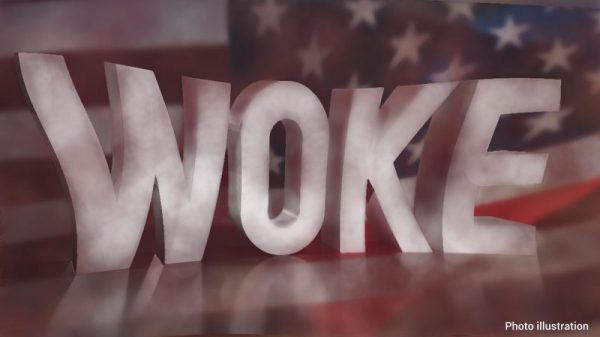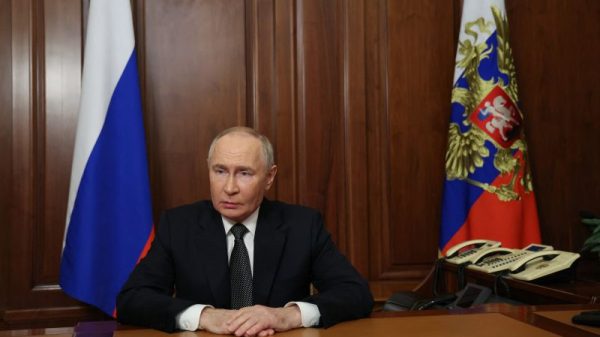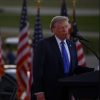President Biden is making it clear that the United States’ rejection of full-throttle globalization during the Trump administration was no aberration, as he continues a remarkable break with decades of trade policy that spanned both Republican and Democratic administrations.
Blending a tough-on-China stance with lavish federal subsidies for favored industries, the president is reshaping the U.S. approach to cross-border commerce to focus on the needs of Americans as workers rather than consumers.
Left out of the president’s strategy, to the irritation of many business groups, have been traditional trade deals, which gave American companies greater access to foreign markets in return for allowing producers in those countries to sell more goods in the United States. The White House says the old approach cost many American factory workers their jobs.
The president, who counts labor unions among his strongest supporters, surprised some in the business community by retaining Donald Trump’s tariffs on Chinese imports after criticizing them during the 2020 campaign as “erratic” and “self-defeating.” As relations soured with Beijing, he prohibited the sale to China of the most advanced U.S. computer chips and last month added a partial ban on American investment in some Chinese technology start-ups.
Past the midway mark of his first term, Biden on trade in some ways resembles his Republican predecessor more than the Democrats who preceded him in the White House. His policies are winning muted praise from some Trump allies even as they irk moderate Democrats who see expanded trade as the route to prosperity and lower prices.
“We are in the midst of a long-term shift in U.S. trade policy toward a set of policies that are more pragmatic, more concerned about workers, more concerned about wages and more concerned about our national security,” said Stephen Vaughn, who served as general counsel in the office of the U.S. Trade Representative in the Trump administration.
The next few months will bring deadlines for key prongs of the Biden trade policy: an effort with Europe to remake the global steel market; negotiations toward an Indo-Pacific Economic Framework (IPEF); and deciding what to do about tariffs on U.S. imports from China. (Commerce Secretary Gina Raimondo is scheduled to land in Beijing on Sunday for talks with Chinese officials.)
Biden’s approach rejects the trade liberalization doctrine that held sway for nearly three decades after the Cold War’s end. Trade rose from 19 percent of the U.S. economy in 1989, the year the Berlin Wall collapsed, to a peak of 31 percent in 2011, according to the World Bank. Access to more foreign goods helped keep inflation under control for years. But by 2021, following Trump’s trade war and the pandemic, trade’s share of the economy had drifted down to 25 percent.
Where previous presidents of both parties prioritized efficiency and low costs for consumers, Biden emphasizes making supply chains more resilient against unexpected shocks such as disease, extreme weather or geopolitics, even if it adds cost.
But it is the free spending on subsidies for domestic semiconductor manufacturing, clean energy programs and public infrastructure that really distinguishes Biden from other presidents of the post-Cold War era — and that has been the most controversial.
Biden’s three signature legislative achievements — the Inflation Reduction Act, the CHIPS Act and the bipartisan infrastructure bill — are expected to funnel several trillion dollars into the U.S. economy in coming years. That spending is designed to address “market failures” and signal the private sector to increase its investment in industries that the administration says will be critical to future economic growth, Heather Boushey, a top White House economist, said in an Aug. 16 blog post.
Administration officials last month hailed what they described as a “manufacturing boom,” saying it is reversing the losses from decades of offshoring. In June, spending on the construction of new manufacturing facilities hit $196 billion, a more than 60-year high when adjusted for inflation.
That investment may translate into future hiring. But manufacturing employment has been in a steady decline for decades as automation makes it possible to produce more goods with fewer workers. Today’s 13 million-person factory workforce is unchanged since January and up just a sliver from the 12.8 million toiling on assembly lines on the eve of the pandemic.
Manufacturing accounts for just 8.3 percent of total employment, down from 8.6 percent when Biden was inaugurated.
The Biden team also aims to help workers by discouraging additional offshoring of jobs. A novel “rapid response” provision in the U.S.-Mexico-Canada Agreement allows Washington to bring cases against specific Mexican plants that are denying workers collective bargaining rights and thereby depressing their wages. U.S. officials have used it several times, including on a General Motors plant in Silao, Mexico, which produces Chevrolet and GMC full-size pickup trucks.
“They understand the path has to be a different path,” said Michael Wessel, a Democratic consultant who has represented the steelworkers union. “They know they have to increase confidence among workers that they can be the beneficiaries of market liberalization.”
For pro-trade Democrats who saw the Trump era as an anomaly, Biden’s rejection of traditional negotiations and embrace of industrial policy has been a disappointment. Former treasury secretary Lawrence Summers, who served alongside Biden in the Obama White House, last month called the president’s thinking “increasingly dangerous” in a webinar for the Peterson Institute for International Economics.
At a time when the labor market already is tight, the administration is wrongly fixated on creating blue-collar jobs in defiance of a long-term shift away from such work, said Summers.
“I am profoundly concerned by the doctrine of manufacturing-centered economic nationalism that is increasingly being put forth as a general principle to guide policy,” Summers said.
Instead of traditional trade deals, the administration is pursuing less ambitious agreements with allies in the Indo-Pacific region and Latin America. Those “framework” deals would coordinate allied supply chains and set standards for doing business without offering U.S. trading partners greater access to the world’s largest economy.
The administration announced progress toward an Indo-Pacific deal in May, which immediately drew complaints from 30 business organizations including the Chamber of Commerce and Business Roundtable. The partial accord was not as comprehensive as the Trans-Pacific Partnership (TPP), a deal negotiated by the Obama administration, which Trump abandoned as one of his first official acts.
“The era of trade liberalization has petered out. We’re in a new world with a new set of challenges,” said Edward Alden, a senior fellow at the Council on Foreign Relations.
Administration officials offer no apologies for their approach. Katherine Tai, the U.S. trade representative, has blamed traditional trade deals for fueling inequality, hastening the exodus of U.S. manufacturing jobs and creating an excessive reliance on China for critical goods. She has vowed that the administration will deliver “a new story on trade.”
A senior U.S. official, who spoke on the condition of anonymity to discuss internal deliberations, cited a Reuters/Ipsos survey as evidence that public opinion has shifted against further liberalization.
In the survey this month, 66 percent of respondents said they were more likely to back a presidential candidate in 2024 who favored “additional tariffs on Chinese imports.” Nearly seven out of 10 favor placing supply chains in friendly nations rather than focusing on cost alone in choosing suppliers, according to a November 2022 survey by the Chicago Council on Global Affairs.
“There’s been a real shift. And frankly, folks that call for a return to traditional trade policies are out of step with where U.S. public opinion and global public opinion are,” the official said.
The administration approach grew out of the Biden team’s concerns that the Wall Street-friendly approach to trade had left a political opening that Trump exploited to win the presidency and had failed to cope with China’s state-directed economic policies. Supply chain disruptions during the pandemic further cemented the view that a new course was needed.
“It’s a mixture of change in the world and a change in perception in the Democratic Party,” said Alden. “But it’s a pretty clear repudiation of the Clinton-Obama legacy.”
Though Biden has retained some Trump policies, he places greater emphasis on working with allies. The U.S. is trying to coordinate its approach to China’s nonmarket practices with Europe as well as its subsidies for clean energy development, the U.S. official said.
“Trump’s whole policy was a policy of victimization: ‘Foreigners are taking advantage of Americans.’ Biden doesn’t spend all his time blaming the foreigners. He promotes multilateral cooperation,” said William Reinsch, a trade specialist at the Center for Strategic and International Studies.
The next few months will offer several trade tests for the administration, as the president gears up for a reelection campaign.
Negotiators aim to wrap up talks on a global arrangement for steel and aluminum by the end of October and to announce agreement on IPEF at a San Francisco summit with Asian leaders in November that Biden is expected to attend.
Also likely before year’s end is the verdict of a lengthy review of the Trump China tariffs that could result in the lifting of some levies.
Some trade traditionalists hold out hope that Biden will adjust course if reelected and pursue agreements that he has neglected thus far. In this view, the president might revisit the TPP, reduce some tariffs or negotiate modest new deals.
That is wishful thinking, according to his aides, who note the president’s labor allies are skeptical of a return to the old way of handling trade.
“President Biden has been really clear about what he wants to do,” the official said. “And I think you should expect to see that continue.”







































